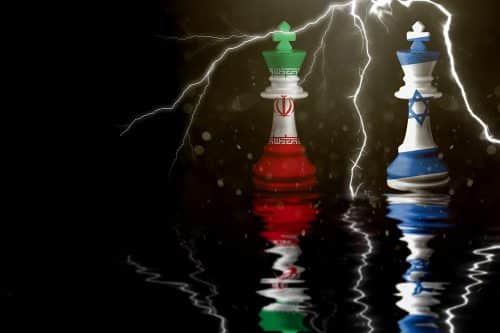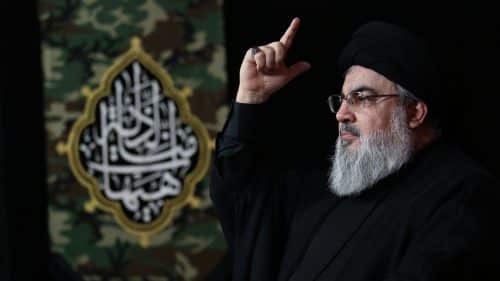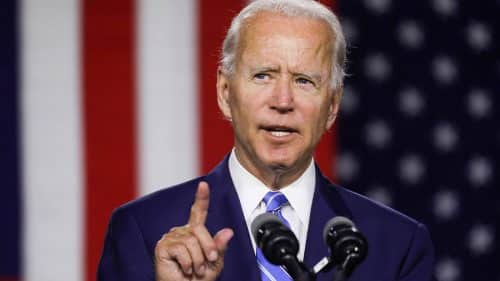In April 2018, then-Israeli Prime Minister Benjamin Netanyahu stood before the world and presented evidence that clearly indicated that Iran had violated the nuclear agreement it had signed. One of the most memorable pictures from that press conference was that of Netanyahu standing next to a shelf creaking under the weight of documents and discs that Mossad agents managed to retrieve from the secret nuclear archive in Iran, and the words “Iran lied” plastered in huge letters behind him.
A week later, then-US President Donald Trump withdrew from the agreement that the previous administration in Washington had signed with Iran, and US sanctions against Iran were reinstated.
The Research Department of Israel Defense and Security Forum (IDSF) decided to delve deeper into the Iranian matter in general, and into the Iranian nuclear threat in particular. In this article we will clarify for you what exactly Iran committed to in the agreement, what it is actually doing in its nuclear installations, why the agreement signed failed to prevent a nuclear Iran and how the State of Israel must prepare and act on this issue today, with the Iranian regime being so close to the nuclear point of no return while the global powers are negotiating with it, to reach the very same, problematic agreement.
The Dual Advantage of the Iranian Octopus
Iran is investing massive resources and budgets in the development of military nuclear capabilities, a game changing weapon that would give it a dual advantage: The first is a deterrent, a sort of “insurance policy” in the form of a nuclear umbrella in support of Iranian forces, which continue to take over large swaths of the Middle East in pursuit of Iran’s Shiite vision to become the sole influencer of the region. The second is an offensive weapon, which would constitute an unprecedented existential threat upon the state of Israel and the entire Zionist enterprise.
The “Iranian octopus” sends its tentacles throughout the Middle East: Hezbollah, Hamas, the Palestinian Islamic Jihad, the Houthis in Yemen and pro-Iranian militias in Iraq. The objective is clear: to weave a noose around Israel, one equipped with an infrastructure of missiles, rocket and drones intended to inflict massive damage upon the Israeli civilian population and adds significant weight to the deterrence equation faced by Israel.
We must understand: the race to build a nuclear bomb is not merely an armaments plan. A nuclear capability served as the ticket to a prestigious and limited club of nine nuclear-capable countries. For this reason, the development of a nuclear weapon is so important to the decision-makers in Tehran, that they are willing to endure sanctions from the Western World; a nuclear weapon would be the crown jewel in the Iranian regime’s efforts to attain the status of a global power.
Who Agreed, and to What: Key Points of the Nuclear Agreement
The “Joint Comprehensive Plan of Action”, which is more commonly known as the “Iran Nuclear Deal”, is an international agreement signed between Iran on the one hand and the United States, Great Britain, China, France, Russia, Germany and the European Union on the other. According to the parties to the agreement, it imposed significant restrictions upon the Iranian nuclear program. Among other things, the agreement requires Iran to reduce its stockpile of enriched uranium, install cameras in its nuclear installations, report its activities to the IAEA (the International Atomic Energy Agency) and more. In return, the countries that are party to the agreement will lift the diplomatic and economic sanctions that were imposed upon Iran since 2012.
As we stated, President Donald Trump announced in 2018 that the United States would be withdrawing from the agreement and would reimpose the sanctions that were lifted as part of the agreement. However, following the election of Joe Biden as President of the United States and the change in administrations, International diplomatic talks had resumed for the purpose of returning the United States to the agreement.
Facts and Violations: A Chronology of Deception
Supposedly, the State of Israel should have wholeheartedly accepted the agreement, which in practice greatly limited, delayed and prevented Iran’s ability to develop nuclear weapons. However, a closer look at the terms of the agreement and a comparison with what actually occurred in the various nuclear installations in Iran paints a worrisome picture.
For example, the agreement requires Iran to remove the heavy water reactor core, which is used to produce fissionable material and render it unusable in the future by filling it with concrete, and indeed Iran reported to the IAEA that it filled the reactor core as required. However, during an interview the Head of Iran’s Atomic Energy Agency and a member of its negotiating team slipped up and revealed that this was a deception: it was not the core rods that were filled with concrete but rather other rods. Moreover, Iran had purchased in secret rods that would replace those that were filled with concrete. In other cases, Israeli intelligence proved to the world and to the IAEA that Iran is enriching uranium in secret, at new sites that have yet to be reported, but was met with a weak response from the world, which preferred to focus upon celebrations over the diplomatic solution to the nuclear issue.
Examples of Iran’s repeated violations of the agreement are many, but the bottom line is that Iran has accumulated enough enriched uranium at a level of 60% to shorten the threshold to a “zero-time breakthrough”. In other words, the time required from the moment the Iranian regime makes a decision until the production of the first nuclear weapon is two to three weeks. After about three months, the Ayatollah regime will be in possession of four nuclear bombs.





